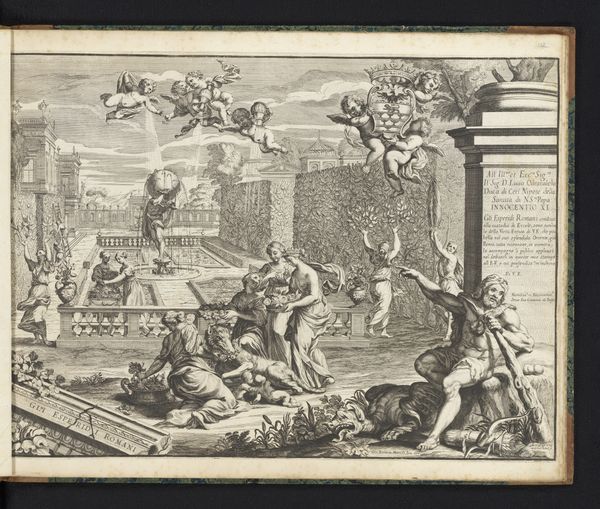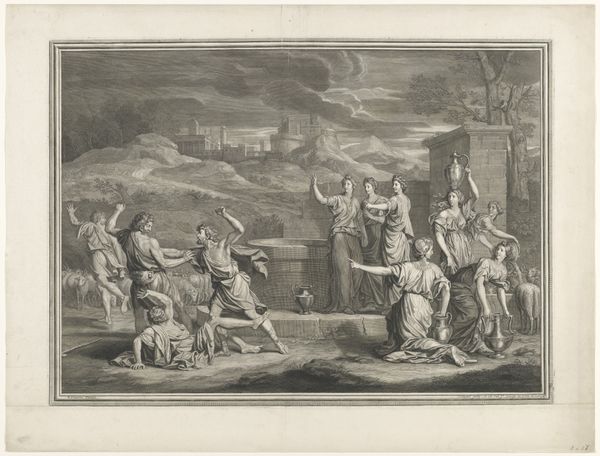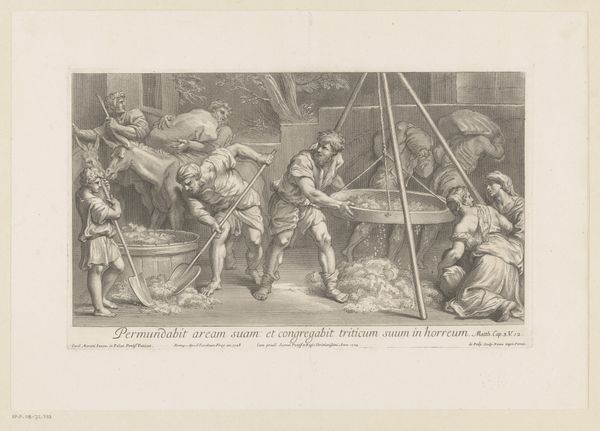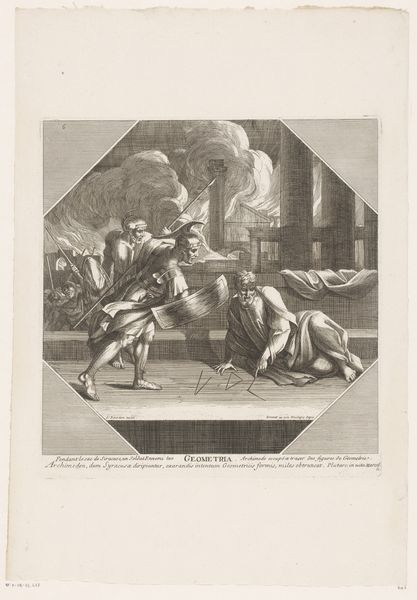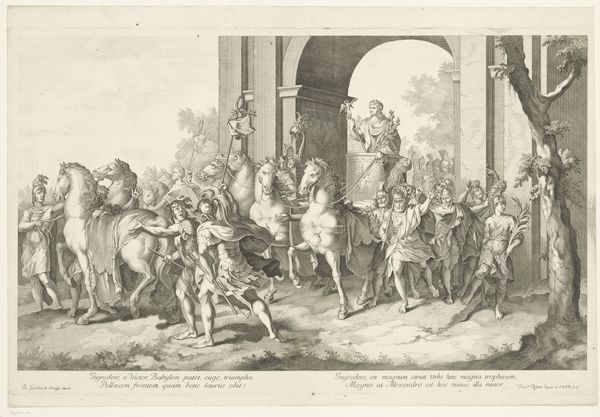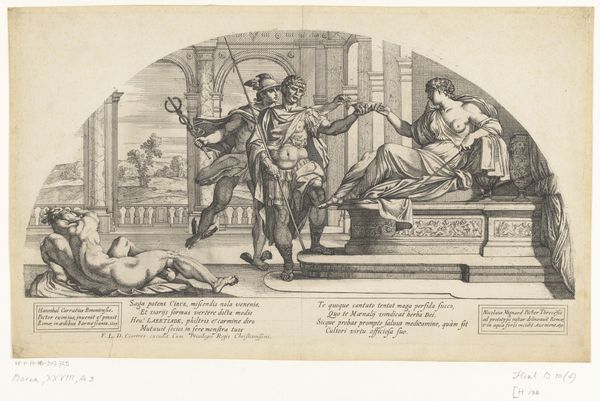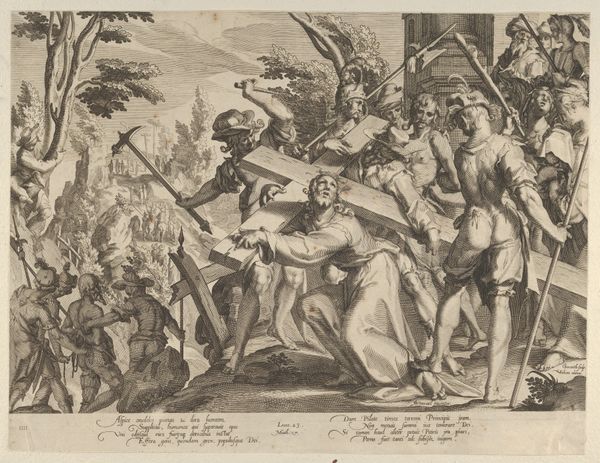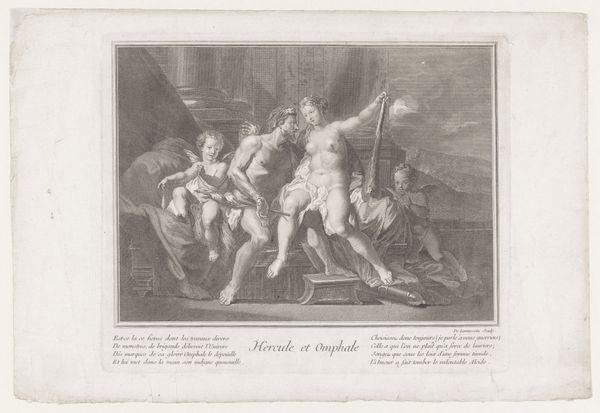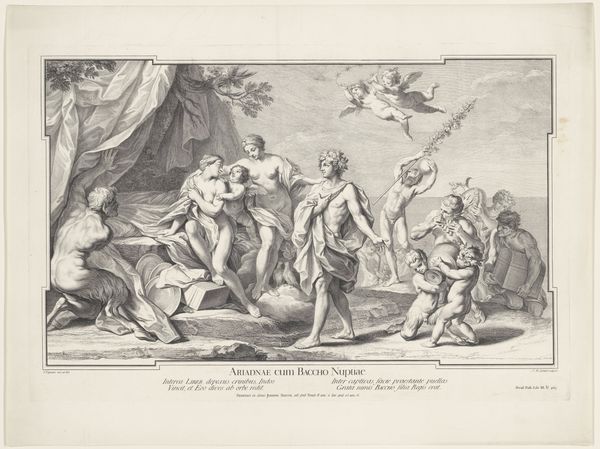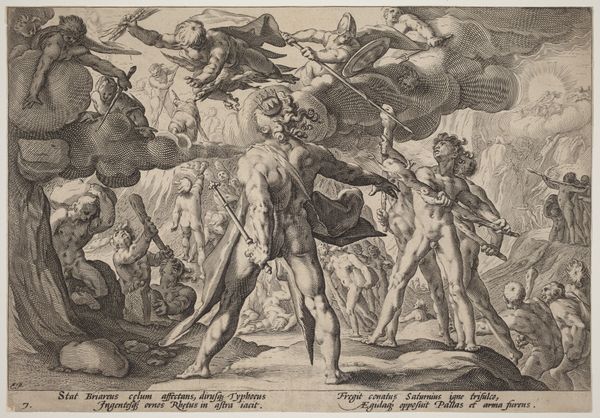
print, etching, engraving
#
neoclacissism
#
aged paper
#
allegory
# print
#
etching
#
old engraving style
#
19th century
#
history-painting
#
engraving
Dimensions: height 257 mm, width 363 mm
Copyright: Rijks Museum: Open Domain
Editor: This engraving, titled "Allegory on the Death of Voltaire," was made by Charles François Adrien Macret between 1778 and 1785. The etching and engraving process gives the work an aged quality, despite its Neoclassical subject matter. What strikes me is the theatrical quality—how can we interpret its staging and symbolism through the materials and techniques used to create it? Curator: Let's consider the material conditions of its making. Printmaking, unlike painting, is inherently reproducible. This speaks directly to Voltaire’s influence—his ideas disseminated widely through printed materials. The lines are etched, each one demanding physical labor to produce, and reproduced so ideas also find labor. Think about that in terms of production. Editor: So, the printmaking technique itself underscores the democratizing effect of Voltaire's philosophy? The labor is embedded in each copy, but the message spreads broadly? Curator: Precisely. And consider the choice of Neoclassicism. This wasn't just an aesthetic preference, but a deliberate association with the perceived rationality and civic virtue of the Roman Republic. Look at the stage like composition, and imagine that setting crafted, arranged and delivered to the masses via ink. This itself presents challenges in a society still driven by aristocratic patronage. Editor: That's fascinating. I hadn't considered the active socio-political decision present in selecting the art style! In a way it adds another dimension of material to be assessed within the prints production. Curator: It encourages us to see beyond the immediate image to the context of its creation. How was this artwork received, and what kind of social exchange did the engraving elicit between the printer and the community? Editor: So, by looking at the materials and process, we understand not only the image but also how that image operated within its world. Thank you, I’ll remember to expand on that!
Comments
No comments
Be the first to comment and join the conversation on the ultimate creative platform.
